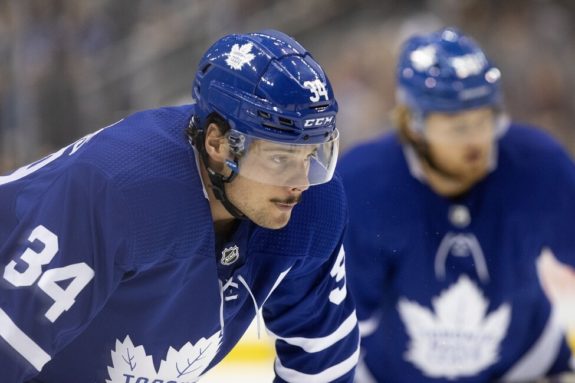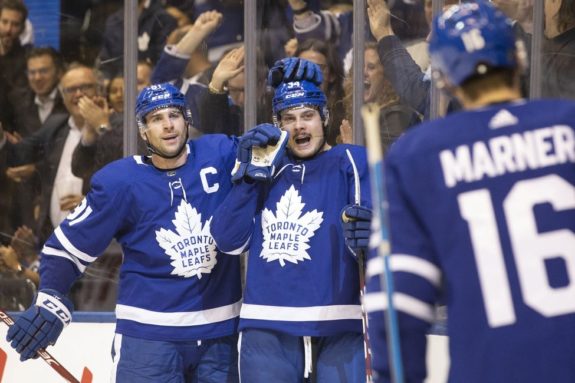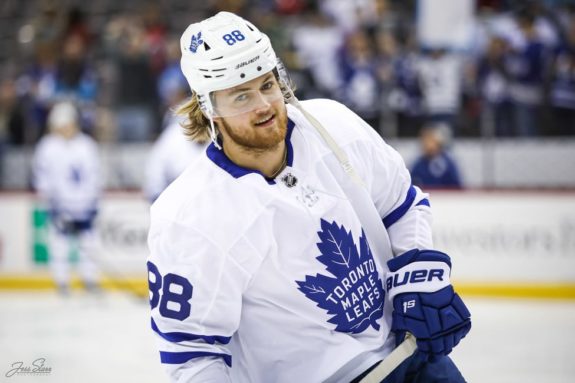It’s just over three weeks since the Toronto Maple Leafs May 31st disappointing seventh-game playoff loss to the Montreal Canadiens. During those three weeks, it seems as if the mood of Maple Leafs’ nation has been both more emotional and more negative than I’ve seen it during either of my two previous seasons covering the team.
My guess is that, as fans, we were more hopeful than we’d been before. That hope came with more promise than what was delivered. As a result, Maple Leafs’ fans are as angry as they’ve ever been. We knew this team was better than the previous two seasons, yet the outcome was similar. That’s tough to take.
Related: Maple Leafs News & Rumors: Trading Morgan Rielly & Whining About Life
In today’s edition of Maple Leafs’ News & Rumors, I’m again collaborating with long-time Maple Leafs’ fan Stan Smith to share our views in the aftermath of the disappointing 2020-21 playoffs.
Item One: Both Fans and Players Are Crushed, But the Players More So
Admittedly, the 2020-21 playoff loss was emotional, and the reaction has been anger. That said, as fans both Stan and I know that, however bad we feel, the players feel a lot worse. I personally respect the team and the players for how they handled that disappointment publicly. They faced their fans and acted professionally.
For example, during post-playoff exit interviews the players were asked what seemed to me ludicrous questions. And I never saw them blink – too much. For example, within days after the heart-breaking series loss where neither he nor his line-mate Mitch Marner had been able to break through when one timely goal would have moved them forward to the next round, a media questioner asked Auston Matthews what he thought about trading his line-mate Marner.
The video shows by Matthews’ reaction that, although he was growing angrier as he answered, he held it together. He finally broke a bit, but in no way was rude or dismissive. He didn’t pull a John Tortorella or even a Joel Embiid, who publicly threw his teammate Ben Simmons under the bus yesterday after the Philadelphia 76’ers NBA series loss.
Embiid demonstrated perhaps honest player frustration, but his rant won’t be easy for either Embiid or Simmonds to live down. I invite you to watch the 76’ers explode from within and then contrast it to how the Maple Leafs both survive and prosper next season.
Related: The Sedin Twins and the 1999 NHL Entry Draft
In summary, the fans were crushed by one more defeat, but the players were more crushed. Now as fans we’ll see how they respond. I hate where this season ended, but I believe I’ll like where it’s going. It’s time to take the next step.
Who wants to bet me that the 23-year-old Matthews and the 24-year-old Marner won’t improve as players as they learn from the experience?
Item Two: Where We Are with the Core Four
Stan was one of those fans who originally thought that a team built with four players taking up half the salary cap had no chance of being a competitive team, especially in the playoffs. In fact, he noted that, during the first year after Matthews and Marner signed their deals, he thought the team took a competitive step backwards as it squeezed to limbo under the salary cap.

That said, his assessment of the moves Maple Leafs’ general manager Kyle Dubas made last offseason were excellent. These moves strengthened the defense with the additions of T.J Brodie (who plays the quietist game I’ve ever seen) and Zach Bogosian (who added size, experience, and grit to the lineup). By the time the 2020-21 regular season started, Dubas had put together a much more balanced team and one that would become highly successful during the regular season. In Stan’s opinion, it was the best Maple Leafs’ team he’d seen in 17 seasons.
To everyone’s credit, the Maple Leafs did have a great regular season, albeit in what was seen to be a weak division. Yet, once again, the team failed to move past the first round of the playoffs. This postseason, the reason the team didn’t make it past the first round wasn’t because they didn’t have a strong enough supporting cast; rather, the Core Four didn’t perform well enough.
Related: Red Wings Dads: Raising the Next NHL Generation
John Tavares was hurt for the entire playoff series. Two of the other three – Matthews and Marner – simply didn’t figure out how to produce against a defensive-minded Canadiens’ team. Only the oft-critiqued William Nylander had the offensive jump the team needed. He contributed the entire series.
Was the 2020-21 Maple Leafs’ team perfect? Far from it. As it showed during the playoffs, the team can’t overcome key injuries or offensive outages. That probably makes them just like most other NHL teams.
Furthermore, what we learned this postseason is that the team needs its best players to be its best players. That happened during the regular season, but it didn’t happen during the playoffs. Our point is that both Stan and I believe this team can be successful given the way it’s been constructed.
Here we’re going to take what we guess will be the unpopular position of sticking up for the organization on two points. First, when Dubas and his team signed Tavares and negotiated contracts with Matthews and then with Marner, they expected the cap to rise over the next few years. That was an important part of the organization’s plan and to blame them for not anticipating a pandemic ignores reality.

Second, the ensuing flat salary cap makes things harder for the Maple Leafs than it does for many other successful teams. Given the income tax situation the Maple Leafs’ players face in Canada and Toronto, the organization must be financially smarter than other organizations. That’s true specifically for the Vegas Golden Knights and both Florida teams.
What we never seem to hear from hockey experts or fans is that the Tampa Bay Lightning can’t win because they have too much money wrapped into four players. Yet we often hear that about the Maple Leafs. That the Lightning do win has nothing to do with the team’s salary structure.
In fact, let’s look at the Lightning’s four highest paid players. Right-Winger Nikita Kucherov makes $9.5 million; goalie Andrei Vasilevski makes $9.5 million; center Steven Stamkos makes $8.5 million; and, defenseman Victor Hedman makes $7.875 million. That’s a total of $35,375,000.
Given the different tax structure, that’s the equivalent of the Maple Leafs paying Matthews, Marner, Tavares, and Nylander about $45,000,000. They make just over $41 million. Doing the math, as it stands right now, each of the top four Lightning players with that $35 million salary-cap hit takes home about $1 million more than the Maple Leafs’ top four players, and the Lightning have a $5 million smaller salary-cap hit.
When I share such discrepancies, Maple Leafs’ fans suggest that the Maple Leafs’ players have income tax specialists who help mediate that tax hit. But, of course, so do the Lightning players. So that seems a wash.

Obviously, it isn’t as simple as we note it here and it doesn’t work out exactly dollar for dollar. However, that extra $5 million still gives the Lightning a huge advantage that’s bumping into the Morgan Rielly, Zach Hyman, or Frederik Andersen range.
What’s Next for the Maple Leafs?
Really there’s nothing next for the Maple Leafs this season. Everything now points to next season. The task Dubas and his team face is to construct a winning team, given the constraints of the salary-cap, the team’s existing roster, and the players who will come or who will leave to create the 2021-22 iteration of the Maple Leafs’ roster.
Related: Maple Leafs News & Rumors: Spezza’s Value & Hamilton’s Availability
Our encouragement to Maple Leafs’ fans – like us – is to hang in there. Both Stan and I see the possibility of good things ahead, and we’re not going anywhere.